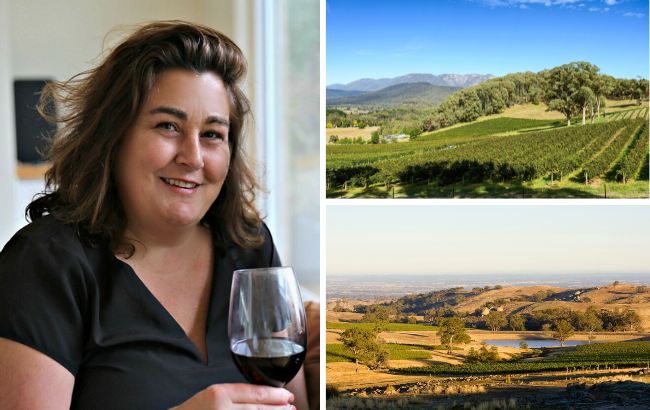Champagne’s 2015 vintage almost ‘too good’
By Lauren EadsThe biggest challenge for Ruinart’s chef de cave this year will be making a NV Champagne that’s “not too good”, given the high quality of the 2015 vintage and the need to maintain consistency each year.
Frédéric PanaÏotis, chef de cave at Ruinart
At a tasting of Ruinart’s blanc de blancs NV and vintage Champagnes in London yesterday, Frédéric PanaÏotis, chef de cave, reported that while 2015 yields in Champagne had dropped by around 20%, the quality of its harvest had been exceptionally high.
“Don’t expect me to say its a vintage of the century because I never say that, but I have a pretty big smile on my face at the moment”, said PanaÏotis.
“We are all pretty happy at the moment. If you don’t make a good vintage this year then what does it take to make a good vintage? It was not a difficult season.”
While conditions throughout much of 2015 were favourable, a drought toward the end of the growing season did dent the eventual yield of the harvest, but importantly not its quality.
“We had a pretty severe drought, not as bas as ’76”, said PanaÏotis. “We did experience hot temperatures which prevented a lot of diseases. We had no downey mildew and no botrytis until the end.”
“The lack of water meant the berries did not grow big enough”, he added, “so yields were around 20% lower than expected but we have nothing to complain about because between the reserve quality is very good.”
Chardonnay grapes for both Ruinart’s blanc de blancs and vintage Champagnes are sourced from vineyards in the Côte des Blancs and Montagne de Reims – Premiers Cus for the Blanc de Blancs, and Grands Crus for the Dom Ruinart. The best Champagne grand cru to PanaÏotis mind is Chouilly, describing it as “the Mersault of Champagne”.
Partner Content
When asked if this year would result in a Dom Ruinart vintage Champagne PanaÏotis is confident, the last being from the 2004 vintage.
“I think we should be able to make a Dom Ruinart in 2015”, he confirmed. “Blanc de blancs I have no choice, it’s not an option not to make it. This year the goal with Blanc de blancs is to not make it too good. You want to make its good but not too good because what am I going to do next year when its not so good? It has to be consistent. So this year I might use some reserve wines and save some of this year’s for the future. We have to think about that.”
While PanaÏotis’ continued goal is to make wines of “purity and aromatic freshness”, his current focus is on increasing the “elements of toast” in his wines, believing increased contact with oxygen to be the key. Since 2010, Ruinart has used corks to seal bottles during secondary fermentation rather than crown caps – the results of which will not be known until 2022.
“I’m very much a fan of toasty elements coming from the reduction”, explained PanaÏotis. “The idea is to in the future increase this toastiness. We think oxygen is the answer to that so we have switched our bottling for secondary fermentation from crown caps to corks, starting with the 2010 vintage. The expected result is more purity and expression.”
Panaïotis joined Champagne Ruinart as chef de caves in 2007, having previously worked at the CIVC, later specialising in the interaction of cork and wine and training its professional panel on different tasting procedures.
The tasting, held at The Dot Project Gallery in South Kensington, featured a tasting of Ruinart’s blanc de blancs NV in bottle, magnum and Jeroboam formats, followed by a vertical tasting of Dom Ruinart vintages 2004, 1998 and 1988.





Chouilly can produce some fantastic wines and it is often said to be the most approachable of the Grand Crus in La Côte des Blancs, but at over 500 hectares it is also the largest Grand Cru in La Côte des Blancs and the quality varies considerably depending on where your plots are situated within Chouily. If you have south and SE facing vines near Le Mont Aigu part of Chouilly then you’re fine and I can understand the’ Meursault of Champagne’ label, but if your vines are elsewhere in Chouilly this moniker is, in my view, something of a risky generalisation